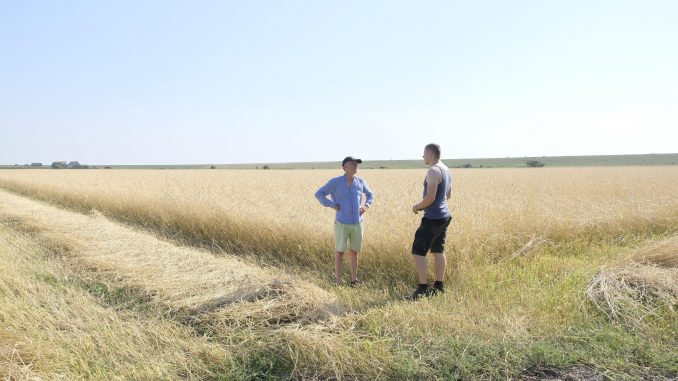
The new EU organic regulation, to be implemented in 2022, promises new opportunities especially for young farmers to regain control and knowledge of local conservation, breeding, sustainable use and marketing of seeds fit for organic production. As part of the team that negotiated the new EU organic regulation, ARC2020 President Hannes Lorenzen is curious about how the new less restrictive conditions for organic seed production and marketing will impact breeders and farmers. He spoke to an organic plant breeder and a young farmer about their ideas on the future of seeds.
Breeding diversity for unpredictable conditions
First up is an interview with a passionate organic breeder from Denmark, Anders Borgen. Hannes Lorenzen met Anders Borgen at the European Cereal Diversity Conference in Kalö, Denmark in June 2019. He is a breeder who is strongly engaged in preserving and developing genetic diversity within landrace cereal populations, specifically for organic production conditions. Hannes’ previous interview with Anders was republished by FAO.
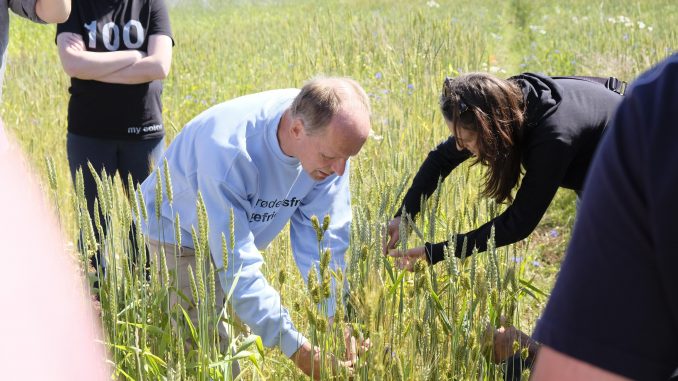
At your European Cereal Diversity Conference last year we talked about stubbornness. You have been trying to breed for more diversity in cereal populations for many years now. Why is it worth going against the grain of conventional breeding for a lifetime?
I am not investing my energy going against conventional breeding. I am focussing on diversity because it is disappearing in cereal production. Diversity is a principle of nature and also a principle of organic farming. It is an asset to face the changing conditions of production, the challenges of climate change, extreme weather conditions, depletion of soil fertility and so on. So it is not so much stubbornness leading my work. I am curious to find out how characteristics of individual plants and mixtures in populations can contribute to long term resilient cereal production.
Conventional breeding seems to offer ready made solutions for every single objective and condition: high yield, specific diseases, drought resistance, for every purpose. Mixed populations seem to offer less of everything. Why should farmers chose your heterogeneous material and populations?
Famers who choose mixed populations or varieties bred for organic production chose a different farming system. In the conventional farming system they have higher yield if everything goes well. But they depend on those ready made solutions, which they cannot control. Buying conventional seed means the farmer must also buy and use fertilizers and pesticides needed to protect a highly sensitive crop. That is costly and risky at the same time.
If they choose heterogeneous material and work with their own populations they can regain control of their production conditions and save money. They can improve their knowledge and can adapt to increasingly unpredictable conditions. They can regain added value from the food chain if they adapt to what consumers want. With my specific approach to breeding I have developed my specific market niche. If farmers chose to work with cereal diversity they may also create their own new markets and better income.
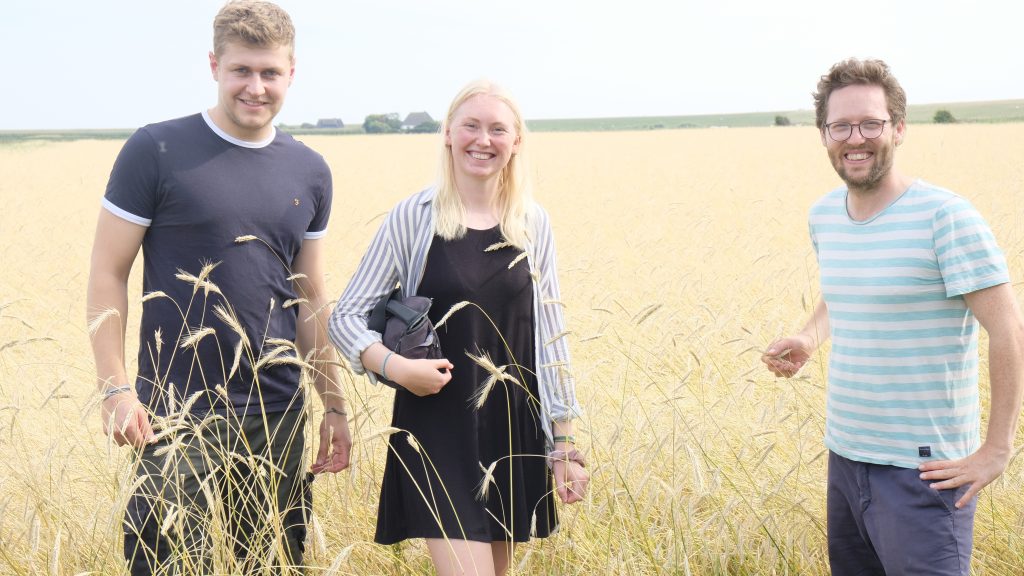
You have gathered a treasure of more than a thousand breeding lines of wheat from which you choose the plants with different characteristics. What are the most important aspects for a good mixture of cereal seeds?
The base line of my selections is to reach plant health in the broad sense. That means seed that is not susceptible to various disease, can compete with weed, carries the right growth habit and heading time, or offers good straw. I also observe every single plant and its performance within a population. I have to know all my plants to chose a good mixture in populations. That is the part which farmers are interested in.
But I also look further down the food chain to bakers and brewers. They want good specific baking or brewing qualities, water take up and specific taste. Producing the right mixture takes all these aspects into account, not just yield. In a sense my mixtures are useless for the conventional farming system. Big conventional farms calculate average quantitative yields over a period of ten years and may afford big losses for some years, compensating with big yield in others. Small and organic farmers cannot afford that. They need a reasonably stable income every year. And they have to get closer to natural conditions and to the consumer to make their living.
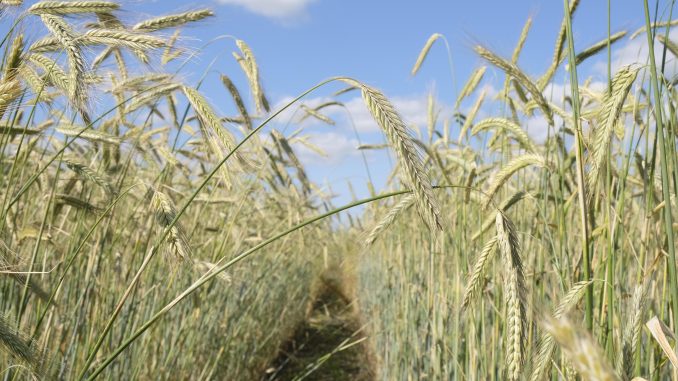
I was encouraged by Hans Larsson and you to try out a landrace of evolutionary rye on my home island in cooperation with a young farmer. He is interested in reproducing organic seed and experimenting with varieties which are fit for organic production. The crop looked good without disease in spite of a long dry spring period. The straw was excellent, but the yield was rather low. What may we have done wrong?
That is very difficult to say. It can be availability of nutrients in a certain period, the dry period or other effects. With rye it can also be that with time it develops longer straw and smaller seeds with lower yields. Rye is cross pollinating unlike wheat and can show some kind of rewilding with crossbreeding. So it needs observation and conservation of its characteristics.
It is also possible that your evolutionary rye is not a true spring rye. If you sow a winter rye in spring you may indeed get a poor harvest. And if it is a mixture or many lines, some may have spring habit, so that the crop looks like a spring rye, but some of the plants gives no grain. However, if the quality of the seed is good, a low yield is compensated by much higher value. The case of St John’s summer rye, which is very popular in Nordic countries because of its extraordinary tase in sourdough bread, shows how much depends on quality and specific marketing to make a good income.
Speaking of value. You have been looking for the right way of financing your breeding work beyond project funding. You are now working with an association which takes care of marketing of your seeds. If we want to get access to wheat other organic heterogeneous material from your collection how would we get our hands on it?
I really would like to concentrate on my work as breeder. That is why I have been looking for people who can take care of communication and management of the seeds I am offering. If you want to have access to my wheat material you can chose from a list of something like twenty varieties which I have so far described. Usually seed companies charge royalties or breeders fees. In my case you can buy a membership of the association and then have access to a certain quantity of seeds for reproduction or further selection. This way I can make a certain income for my expenses and breeding work and I have time for my research and development.
Many people are nowadays intolerant for gluten in wheat. Are you also trying to select varieties or material which would respond to that growing demand?
Yes this has indeed a very high priority in my selection and breeding work. Conventional breeding has followed demands of the baking industry to improve so-called “falling numbers” of starch being transformed into sugar which happens during germination and results in baking qualities for industrial bakeries. I am focussing on removing those factors to develop varieties or mixtures of wheat seeds which brings wheat bread back to people who now cannot eat it any more.
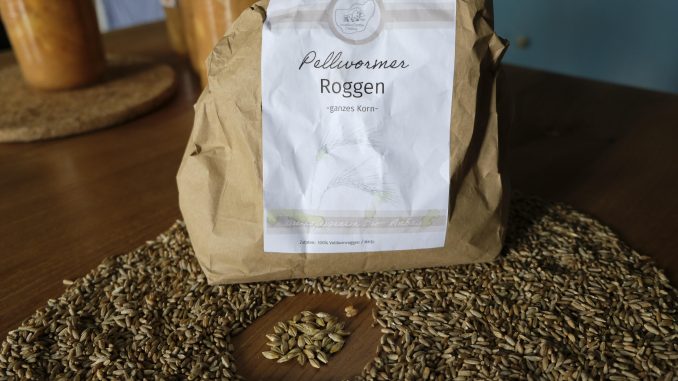
How a Swedish rye landrace adapted to North Sea climate conditions
Another breeder that Hannes met at last year’s European Cereal Diversity Conference is Hans Larsson from Sweden. Like Anders, Hans is an organic plant breeder dedicated to preserving and developing genetic diversity within landrace cereal populations. Hannes agreed to take Hans’ special Swedish rye landrace home to Pellworm island, North Friesland. The rye was grown out in cooperation with a young farmer, Jan Gonne Thams, who is is about to take over the organic farm from his parents on the island.
In this second interview, young farmer Jan Gonne Thams (25) tells us how the Swedish rye landrace adapt to North Sea climate conditions.
Jan studied agricultural economy in Rendsburg and is preparing his final thesis on the economic analysis of the farm he will inherit. The farm was converted to organic in 2018, cultivating 90 ha, half of it being permanent grassland the other half is used for feed and cereal production. Cattle is full time grazing during April to October and fed with hay during winter. Extended crop rotation, solid manure, own straw, red clover and green crops are combined to improve soil fertility.
You have tried a Swedish landrace of rye this year on your farm. What did you expect?
I am interested in developing seed for organic production. My father has experience in growing cereals but mainly for animal feed. I want to learn how to grow varieties and material which is the basis for local quality food and adapted to the specific climate of our island in the North Sea. We have rather heavy soil on marshland, but we also have a lot of wind and sun. Those are good conditions for avoiding disease and producing good seed quality. Not too long ago farmers multiplied seed here for mainland companies. I would prefer to grow and market my own organic local seed and to sell it here and to the mainland.
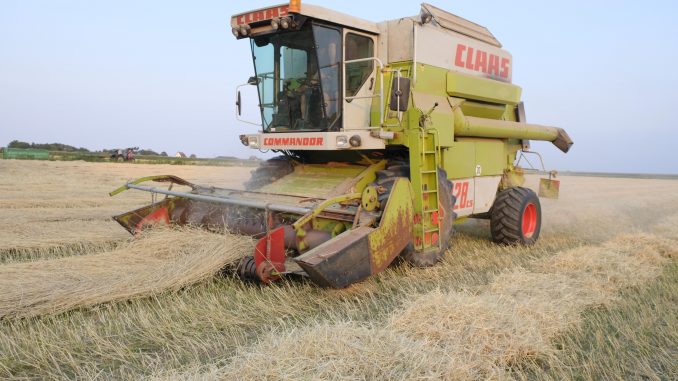
You just harvested the rye. How was that?
I was surprised about the quick germination at the start. We have prepared the soil mid April and sowed end of April. The last three years we had extremely wet winters and very dry spring. That was also the case this year. But the rye grew up pretty quickly and strong. Even the wild geese, being a big problem here mainly for winter crops did not make any damage. I wonder why they did not like the rye.
Any problems with fungi or other disease?
No, we had some rust at a later stage which did not harm the heads, weed was well dominated and the straw was fantastic. Never seen such a good quality and quantity. You hardly get straw here, especially for organic farms, because almost all cereals are harvested entirely for animal feed. So that is an important asset. The only problem was quite a low yield compared to other places. But the quality was excellent. We are now analyzing what went possibly wrong.
What are you now doing with the seed?
That is still a question. We had a problem with cleaning at the local facilities. They had not sufficiently cleaned the crop before and we got some barley in. We have to see how to get that out again, we will find a solution. Our plan was to exchange and market most of the harvest as organic rye seed. Normally that is only possible from 2021 when the new EU regulation allows marketing of heterogeneous material. We also plan to produce flour for our on farm shop and to sell the rye to bakeries.
What are your plans for the future?
Learning from my mistakes and step forward into new trials with landraces and organic seeds. We will try again with rye and wheat in the coming season and gather more experience and knowledge. We might now have to buy our own drying and cleaning machines so not to have another loss or extra costs like this year. Our local shop already gives us a lot better income for our farm products. Organic seed production could become another strong pillar of income in the future.
More on St John’s rye (Sint Jans rogge, Johannisroggen, eternal rye)
Saint John’s rye was an important local variety (landrace) that was grown across the Netherlands until the rise of modern ryes by the end of the 19th century, in particular Petkuser from Germany and later hybrid varieties. It was one of three main landraces: the low-growing Veluwe kruiprogge (Veluwe creeping rye); langstrorogge (long straw rye) which grows in sandy soils; and Sint Jans rogge (Saint John’s rye) that grows to over two meters.
Today the local landraces have practically disappeared and the production of rye has decreased dramatically. Saint John’s rye had almost vanished from the Netherlands by the year 2000; only Ruurd Walrecht still grew it as part of his agricultural collection at the De Oerakker foundation, keeping the fields well separated from other ryes to protect its purity. Walrecht’s work proved to be very important; the Wageningen Agricultural University did not include the Dutch Saint John’s rye in their gene-bank and it is not even included in Gatersleben international rye genebank.
The rye is named after Saint John as it was traditionally planted by June 24, his birthday. As Anders Borgen notes: “Most ryes are ‘winter ryes’, planted in autumn. Winter rye carries a cold-requirement for setting seed. The difference between Johannesroggen (Saint John’s rye) and normal winter-rye is that Johannesroggen will have more vegetative growth after sowing. If you sow at midsummer time, you can therefore use it for grazing or hay production during summer and autumn, but it will not set seed until next year.” Saint John’s rye is also known as an intermediate rye. Typically it was sown on fields where other grains had just been harvested, as Saint John’s rye was known to not deplete the soil, giving it the name ‘eternal rye’. The rye could also be grown for up to six or seven years in the same field, and after one year of letting the land lie fallow, it could be grown again.
Due to the large root system, which supports the tall height of the grass, this rye was less dependent on fertilizers and irrigation. Saint John’s rye plants also helped maintain a healthy soil life through mycorrhiza – the relationship between the roots and fungus in the soil. The use of pesticides in modern rye farming means the ecosystem that once co-existed with rye crops has disappeared: in casu hamsters, quails, corncrakes, larches, various insects (grasshoppers, butterflies and moths), birds of prey and flowering plants including the unique rye lily (Lilium bulbiferum var. croceum).
Saint John’s rye flour was once used to bake bread and the whole grains were used to make black rye breads like roggebrood (baked for 8-24 hours) and ontbijtkoek (a breakfast cake similar to ginger bread). The grass stems were used to produce various fabrics, insulation and furniture and were sometimes left in the field after harvest to continue growing and provide feed for sheep in autumn and winter. Rye beer production started recently in 2010. Today just two hectares are planted with Saint John’s rye in Overijssel and Noord-Brabant. Five mills are already operating in the area.
More on seeds and diversity
Letter From The Farm | The Resilience and Privilege of a Rural Homestead
What’s Farming got to do with the 1m Species Threatened with Extinction? 10 Key reads
Gene Banks. Solutions to crisis or museums for seed diversity?
Let there be biodiversity! The importance of sharing free seeds


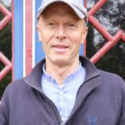
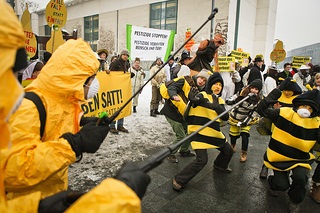
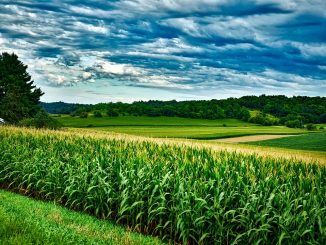
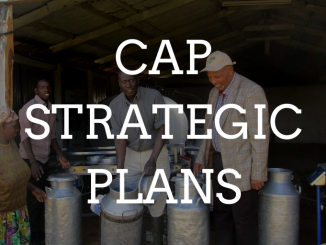
1 Trackback / Pingback
Comments are closed.